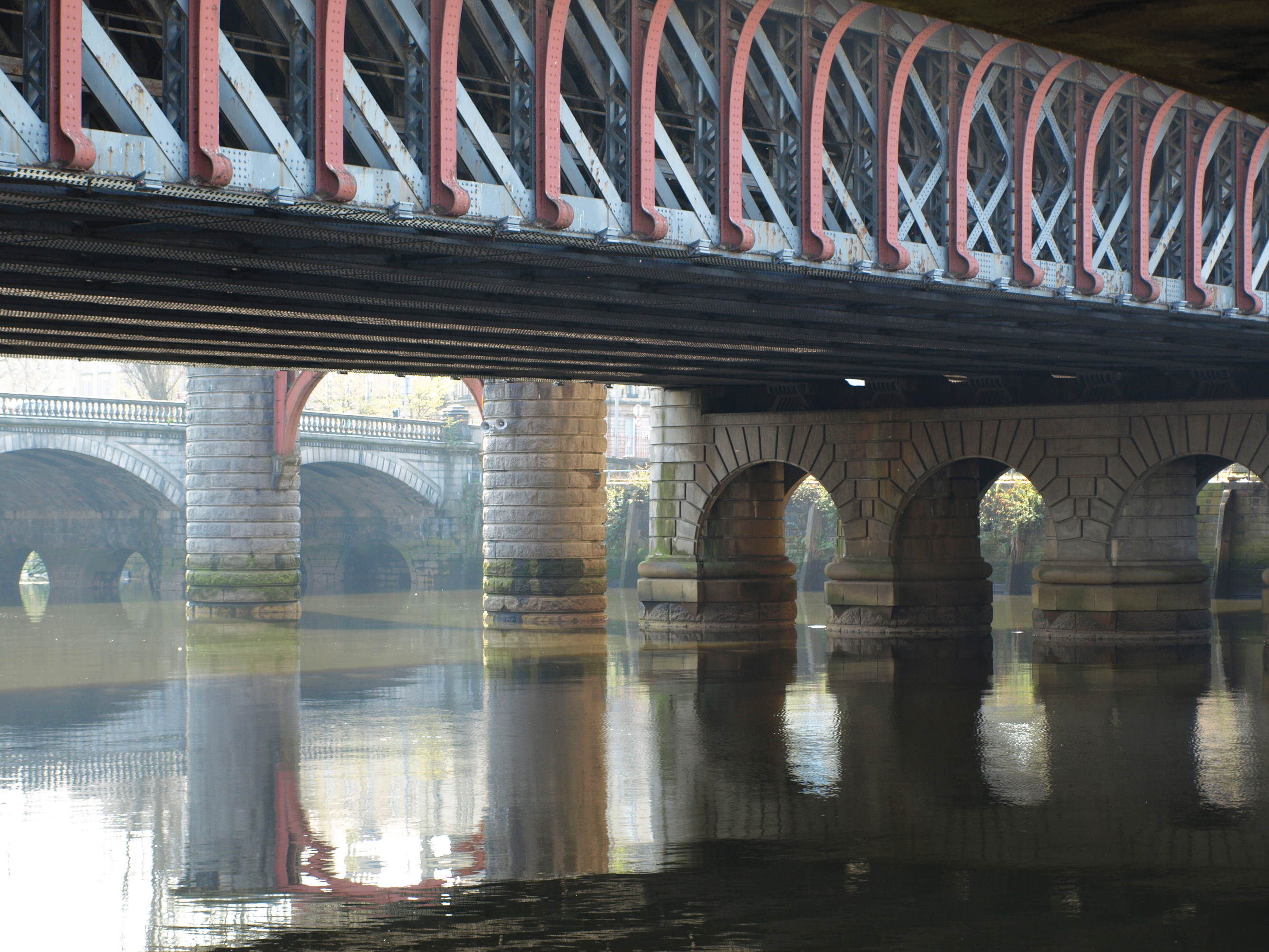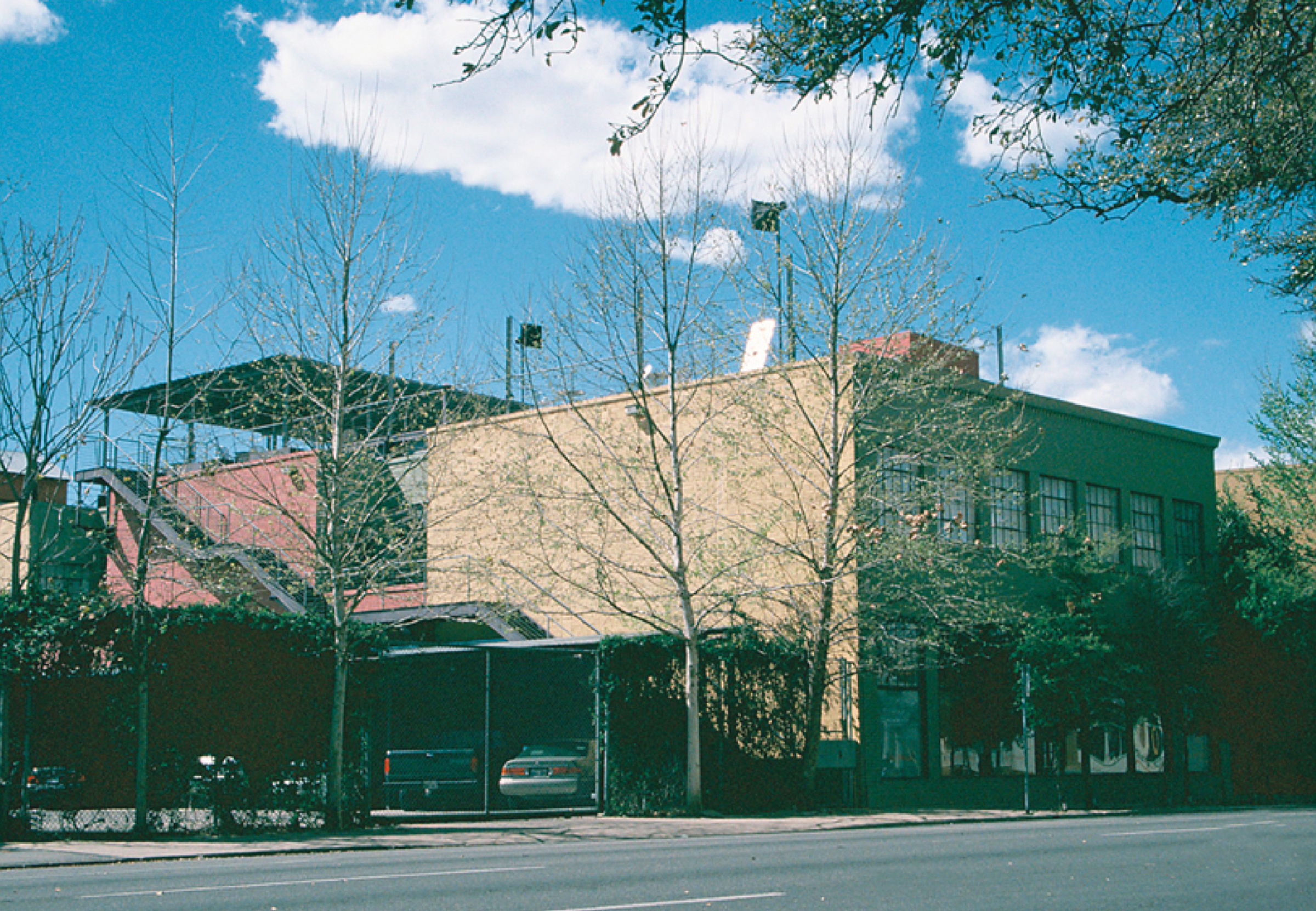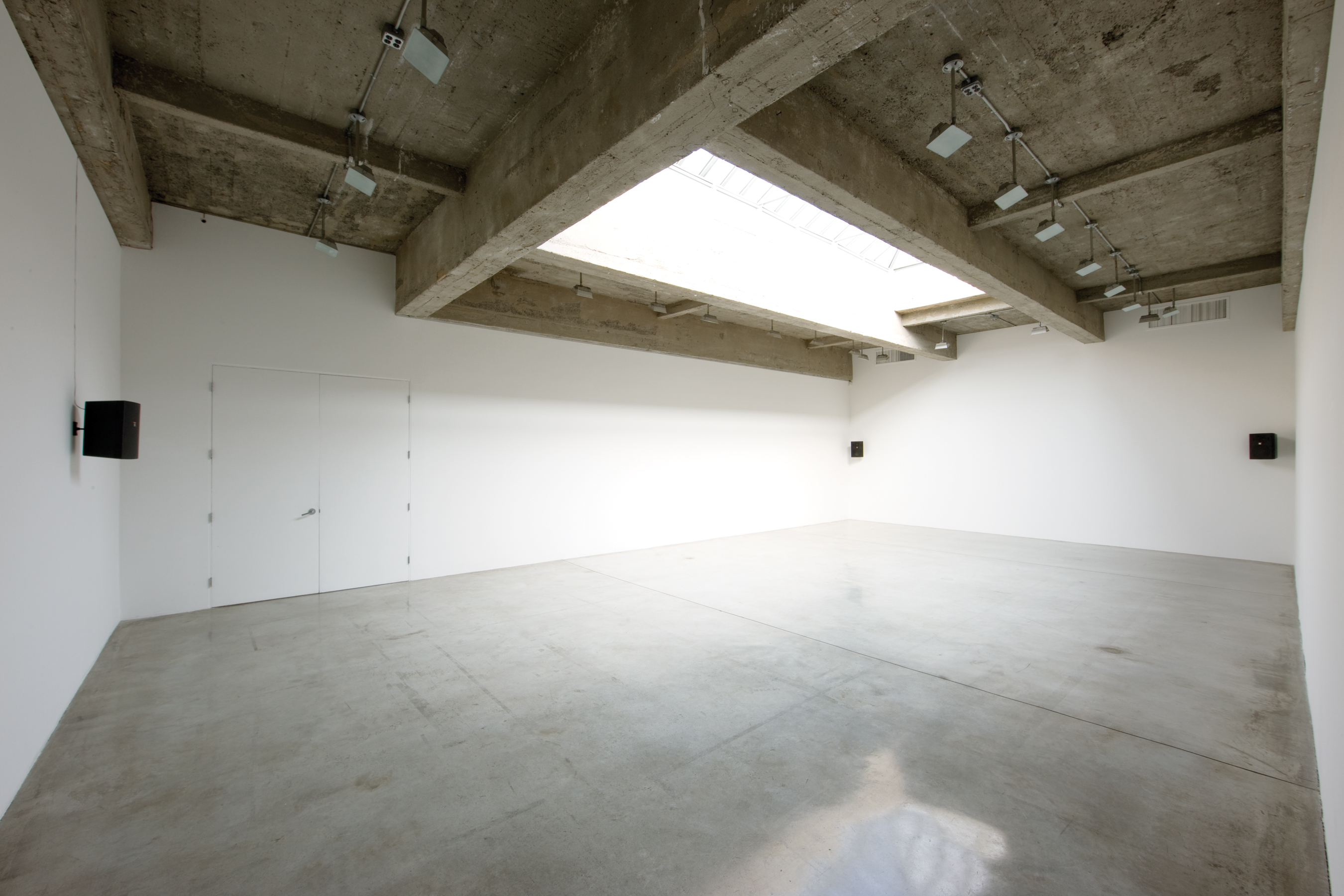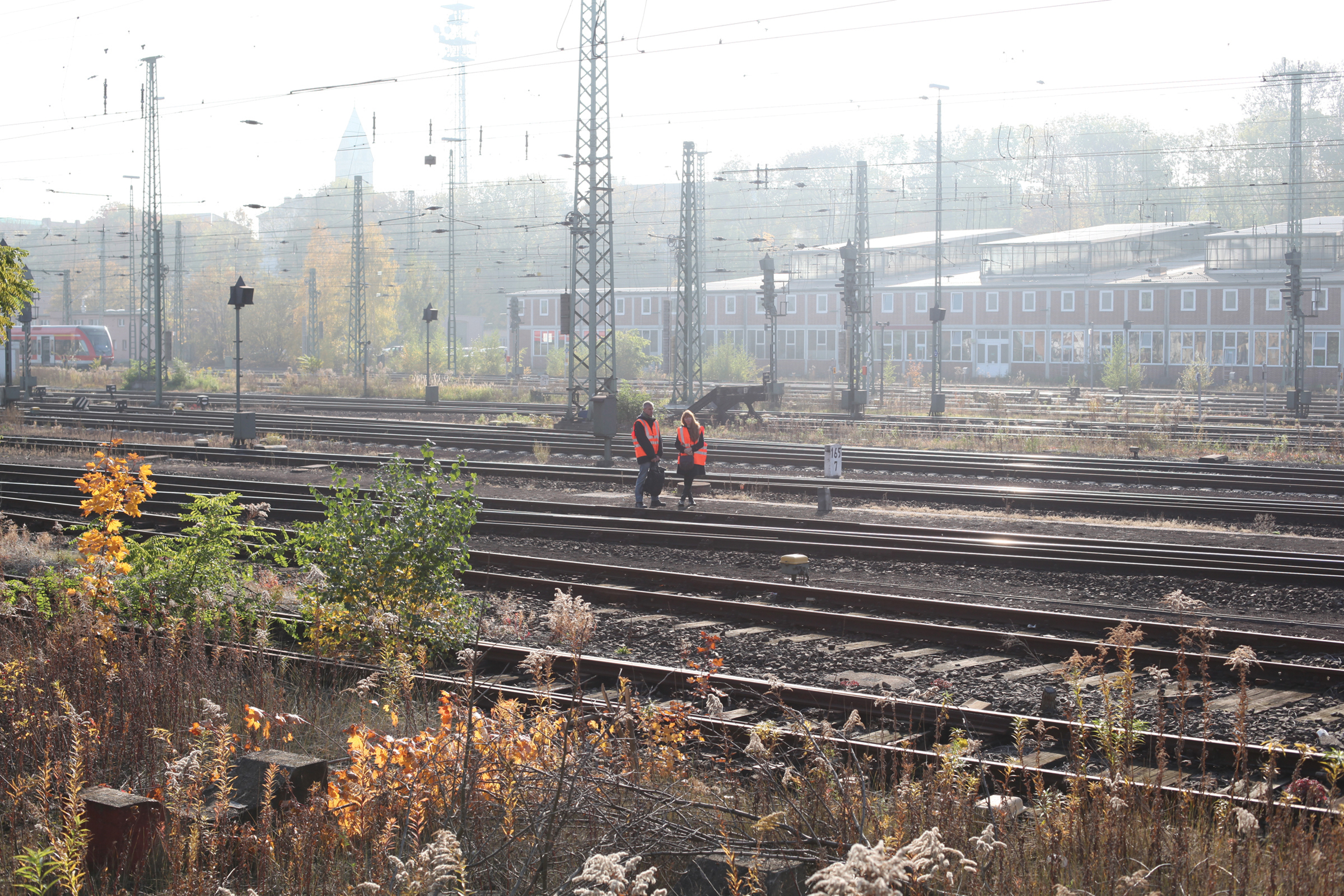« Features
Susan Philipsz: Sound As Invisible Sculpture
By Caridad Botella
MORE THAN SOUND
Sound became part of aesthetic experience in the beginning of the 20th century, when artist Marcel Duchamp made With Hidden Noise (1917), a collaborative work with artist and friend Walter Arensberg. This ready-made included a secret piece added by Arensberg inside a ball of twine stuck between two brass plates; the piece is meant to be held (action is required) and shaken (sound is emitted from the object) so that the secret piece rattles inside. We will never know what the artist hid inside, but the sound invites us to wonder and challenges the viewer to guess. Back then, nobody would have said Duchamp was a sound artist, but this work opened the possibility of using sound as a means of evoking thought and experience.

Susan Philipsz, Lowlands, 2008/2010, three-channel sound installation, duration: 8 minutes, 30 seconds. Installation view Glasgow International Festival of Visual Arts, Glasgow, 2010. Photo: Angela Catlin. Courtesy of the artist and Tanya Bonakdar Gallery, New York.
Today we can affirm that the sense of hearing has gained stature amongst artists’ forms of communication throughout the past and present centuries. Sound has become the “object” and the means by which the message comes across. So, when Scottish Susan Philipsz was awarded the Turner Prize in 2010 for the sound installation Lowlands Away, not only did she win an award but sound art reached a glorious moment of acceptance as an art form as well. But for the sake of her work’s poetic subtlety and complexity, let’s not consider Philipsz a sound artist. She studied sculpture making, and even though she didn’t dwell on the physicality of things, she did on the physicality of sound, the sculptural aspects of it. “I had always liked singing, and I started thinking about the physicality of singing-becoming aware of the space created by the voice in the body and how it projects into the space around you,”1 she told The Guardian after winning the prestigious award.
Sounds invade and fill space in a similar manner as a physical sculpture does, but sound infiltrates our body, triggering different sensations and moods than images do when they make their impact through the sense of vision. Philipsz plays with this premise in order to create almost immersive auditive experiences that are meant to trigger such things as memory, melancholy, longing or escapism. Philipsz, who mostly sings a capella versions of various types of songs, from pop music to traditional folk music, is known for her beautiful, disembodied voice, though she occasionally uses instrumental compositions as well. She has developed works for gallery and public spaces, making site-specific sound installations for each project that are occasionally accompanied by photography and film.

Surround Me, 2010. Commissioned by Artangel, London. Installation view. Photo: Julian Abrams. Courtesy of Artangel.
Her use of sound as a trigger tool began in a simple but compelling fashion: one of her first sound interventions took place at a Tesco supermarket (1997), for which she sang very well-known pop music songs through the PA system, tapping into the autopilot we all have when doing groceries and triggering emotions associated with this kind of popular music. Philipsz’s installations evoke emotions almost as an auditive way of representing through sound and extending representation to our psyche. Philipsz does this by articulating a sophisticated network of referents that directly revolve around a specific emotion or condition, but also by finding these referents in the past, reinforcing the feeling by adding the sense of history and passing of time. The installation Sunset Song (2003), includes two solar-powered structures and a recorded sound installation, first created during her residency at Artpace San Antonio. It takes its name from an old Scottish term for a melancholy song dedicated to something or someone that no longer exists, a premonition of what the lyrics of the installation entail. She sang two versions of a 19th-century American murder ballad, The Banks of the Ohio, in a call-and-response arrangement, the volume of her voice varying according to the shifting daylight. Both versions deal with a crime of passion by both a man and a woman. By connecting the title with the lyrics and the contingency of the sunlight, the artist represents the fleeting of love, of life, of time.

Sunset Song, 2003, solar powered sound installation originally commissioned and produced by Artpace San Antonio, Texas. Installation view. Courtesy of the artist and Tanya Bonakdar Gallery, New York
MELANCHOLY AND SOCIAL CONSCIOUSNESS
The work that won her the prestigious prize, Lowlands Away (2010), was originally created for the art festival Glasgow International. Under each of the three bridges in the city center were installed recordings of the artist singing three versions of the same 16th-century Scottish song, in which a drowned lover returns to haunt his beloved, spreading, during the festival days, a Scottish lament over the black waters of the River Clyde. The Turner exhibition consisted of her voice sounding in the empty gallery, which some visitors found out of context for such an installation, conceived to reverberate in the river waters of her birth town. Nevertheless, in London, occurring simultaneously with the exhibition, a six-part piece, Surround Me, was evoking the same reaction and could be experienced in various locations around the city: walkers happened upon the melancholy sounds of 16th and 17th century English madrigals as they wandered past London Bridge, the Bank of England and the alleys of the financial district (See, Higgins).

Here Comes Everybody, 2008, four-channel sound installation, duration: 8 min 42 sec. Installation view at Tanya Bonakdar Gallery, 2008. Photo: Fabian Birgfeld, photoTECTONICS. Courtesy of the artist and Tanya Bonakdar Gallery, New York.
While most of her works are not overtly political, some do address political issues that become fragmented by the duality of her voice, which combines elements of sorrow and passionate singing. In the past, she created The Internationale (1999), a recording of her voice, singing this anthem of international socialism, which was installed in an underpass in Ljubljana, Slovenia. Her powerful rendition of the anthem cast doubt on whether it was a call for social revolt or a melancholic gesture. This work was reinstalled in 2011 together with We Shall Be All (2011) on the occasion of her presence at the Museum of Contemporary Art Chicago. Both songs refer to the history of workers and their struggle, but We Shall Be All is a direct reference to the city’s history. The song is taken from the American version of The Internationale, adapted by Charles H. Kerr (American, 1860-1944) for the Industrial Workers of the World songbook. The work combines various sounds and texts that refer to events surrounding the 1886 Chicago Haymarket Affair-in which numerous civilians and police officers were killed after violence erupted at a rally for striking workers-and its aftermath.2 Here again sound and specific location are paramount to the meaning and effect of the work.
Sound is seen and applied as a means of reaching out to the collective and individual. Through researching and working with different singing techniques from past times, Philipsz also demonstrates how singing has developed within the necessities of the collective. In the gallery installation Here Comes Everybody (2008), whose title is a phrase in the James Joyce novel Finnegan’s Wake, she explored the tensions between wanting to belong to a group and longing for solitude. The carrier song is Trees and Flowers (by Glasgow punk duo Strawberry Switchblade), about wanting to be alone. The song is interpreted in two different rooms and manners: first in the artist’s characteristic disembodied voice, evoking loneliness; and second, using a singing technique called “fasola,” invented in the United States in the 1800s that is iconic in the democratic aspect of singing books and techniques. The chore directors who created this technique developed a system that was easier to use in public congregations by not prioritizing any one particular voice and therefore making everyone in the group equal to each other.3

Study for Strings, 2012, 7-channel sound installation. Commissioned and produced by dOCUMENTA (13). Installation view at the Hauptbahnhoff during dOCUMENTA (13) in Kassel, Germany. Photo: Krzysztof Zielinski. Courtesy of the artist and Tanya Bonakdar Gallery, New York.
THE UNAVOIDABLE IMPACT OF SOUND
In this predominantly visual world, images are more likely to leave us indifferent, as we can easily ignore the most brutal visuals but sound is almost impossible to avoid. Philipsz’s strategy profits from the current discrediting of the image but continues exploring issues with which the visual arts have always been concerned: history, memory, emotion, personal relations, love, death and even music. Her major achievement is to offer an alternative path off the purely visual and create such compelling auditive experiences that don’t leave people indifferent. Even though her tool is musical sound, she is not “just” making music as the effect of it works together with the context and the audience. Her work is thought and made for a specific place like the installation made for Kassel’s dOCUMENTA (13)4, Study for Strings (2012). For this occasion, 24 speakers were installed at Kassel’s former train station Hauptbahnhof, for which the artist had a viola and cello player play their parts of Pavel Haas’s Study for String Orchestra, playing each note separately so that each one came from individual speakers. By doing this, the composition is fragmented, scattered over the whole platform and never complete. The artist uses the power of collective memory-that station was a Nazi point of departure for transporting Jews to concentration camps-while she recovers the real, private story of Haas, who was deported to Terezín, where he composed Study for String Orchestra in 1943, one year before dying in Auschwitz.
Study for Strings will be reinstalled at MoMA on the occasion of the museum’s first exhibition on sound art, which will run from August 10 to November 3. The question remains whether such an installation could be “moved” to a different architectural environment without losing a great deal of its meaning and reception. The fact is that not only the Turner Prize awards the relevance and achievements of sound art, but one of the most relevant modern art museums will gather 16 of the most prominent artists working with sound. Susan Philipsz’s work represents a subtle and poetic approach to the use of sound, whose intention is to make us aware of our physical environment and of the sometimes invisible history attached to it, indeed very much like sculptures do.
NOTES
1.See, Charlotte Higgins. “Susan Philipsz: Sonic Boom,” The Guardian Tuesday 7 December 2010. http://www.theguardian.com/artanddesign/2010/dec/07/susan-philipsz-turner-prize
2.A detailed description of We Shall Be All can be found at <http://www.mcachicago.org/exhibitions/now/2013/254>
3.See, <http://www.tanyabonakdargallery.com/press_release.php?exhibit_id=196>
4.See,<http://documenta.de/research/assets/Uploads/Studyforstrings.pdf>
Caridad Botella is an art historian and independent art and film curator based in Bogotá, Colombia. From 2006 to 2011, she worked as director at Witzenhausen Gallery in Amsterdam and is now director of Independiente, the gallery’s curating project in Colombia. She is a frequent contributor to various publications in Europe and the U.S. and regularly lectures about cell-phone filmmaking, new-media curating, film appreciation and art history.



































Leave a Reply
You must be logged in to post a comment.